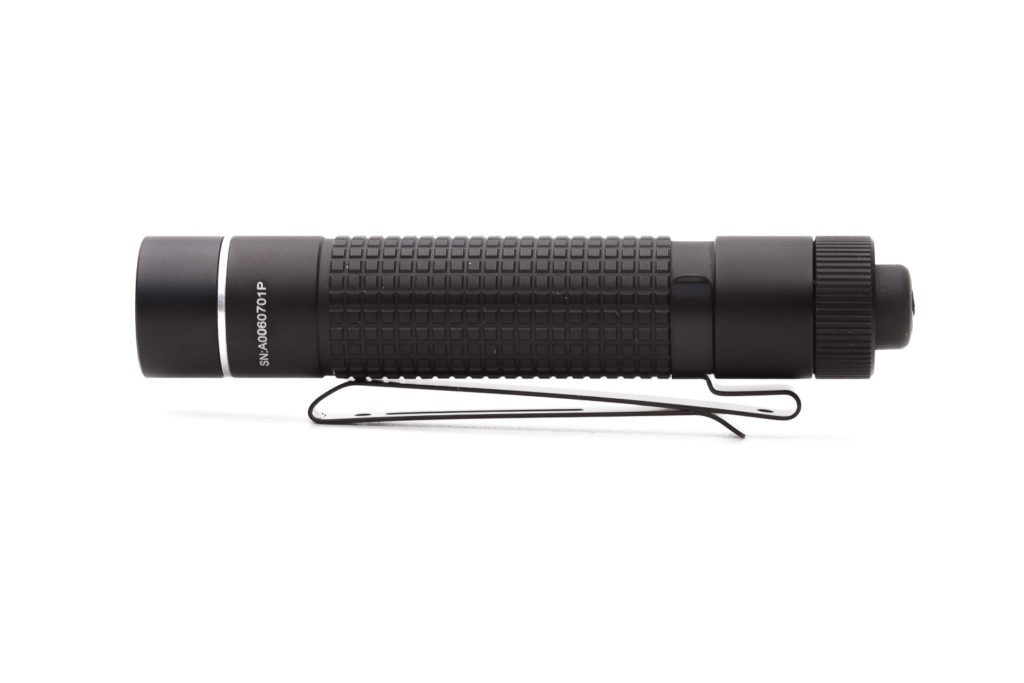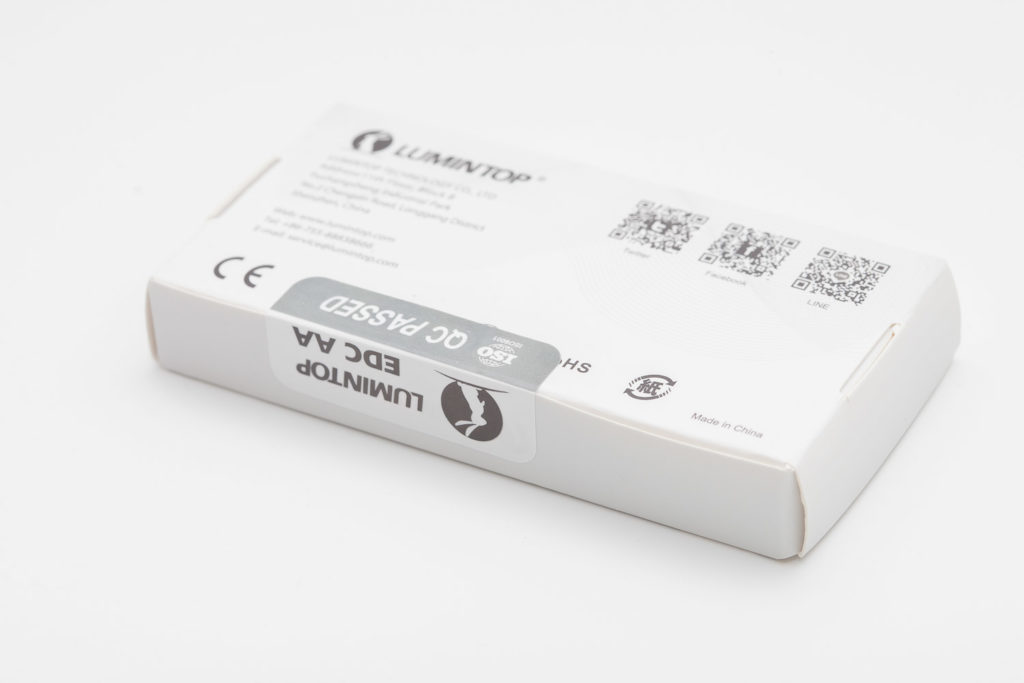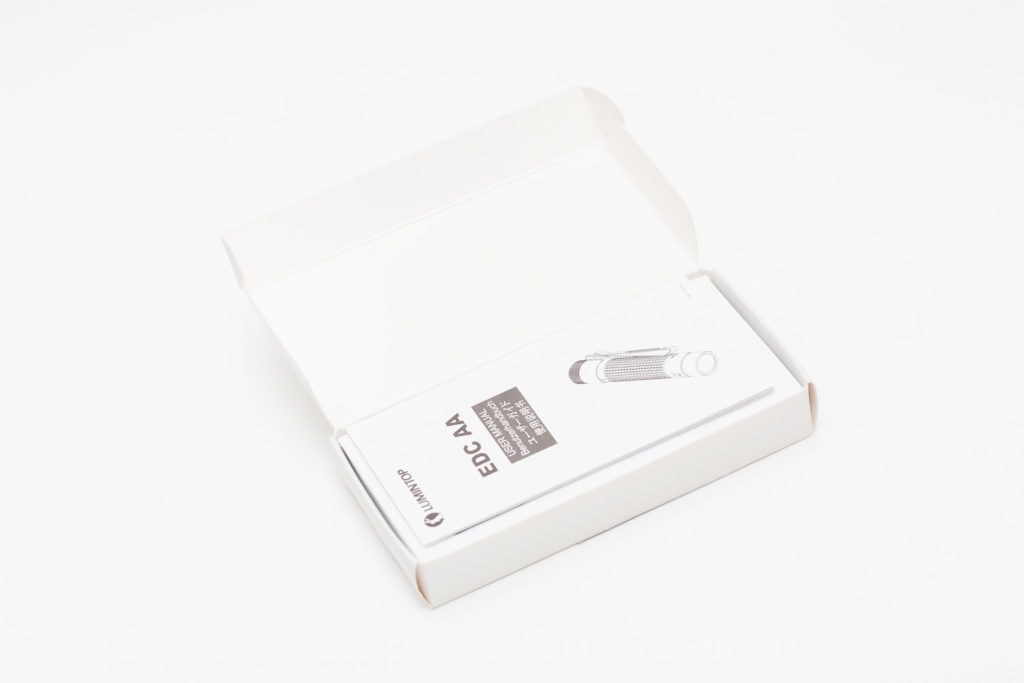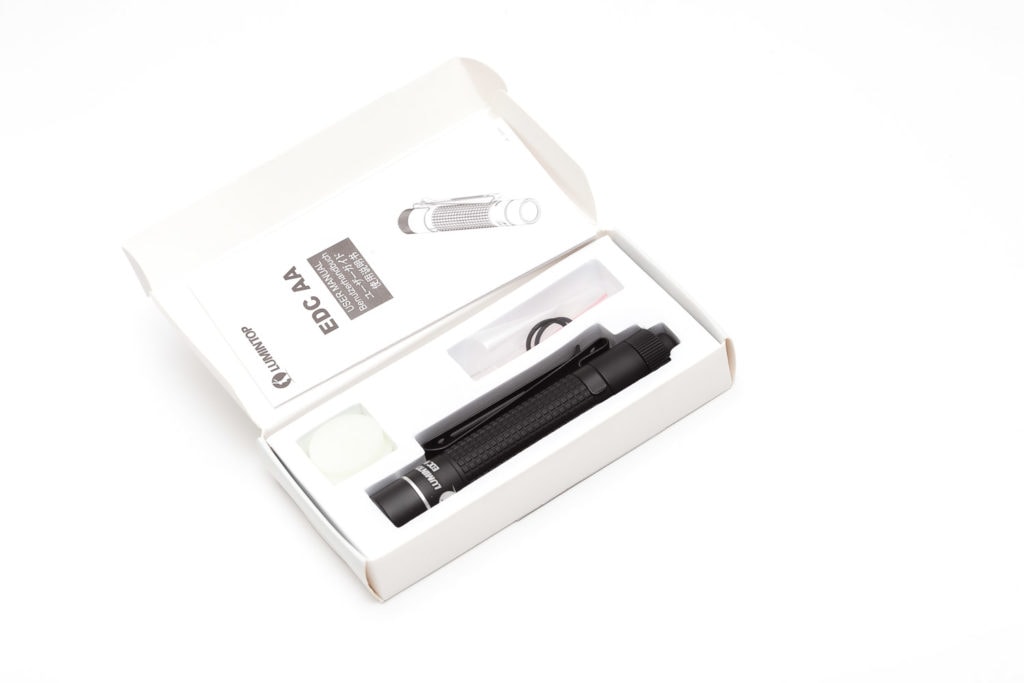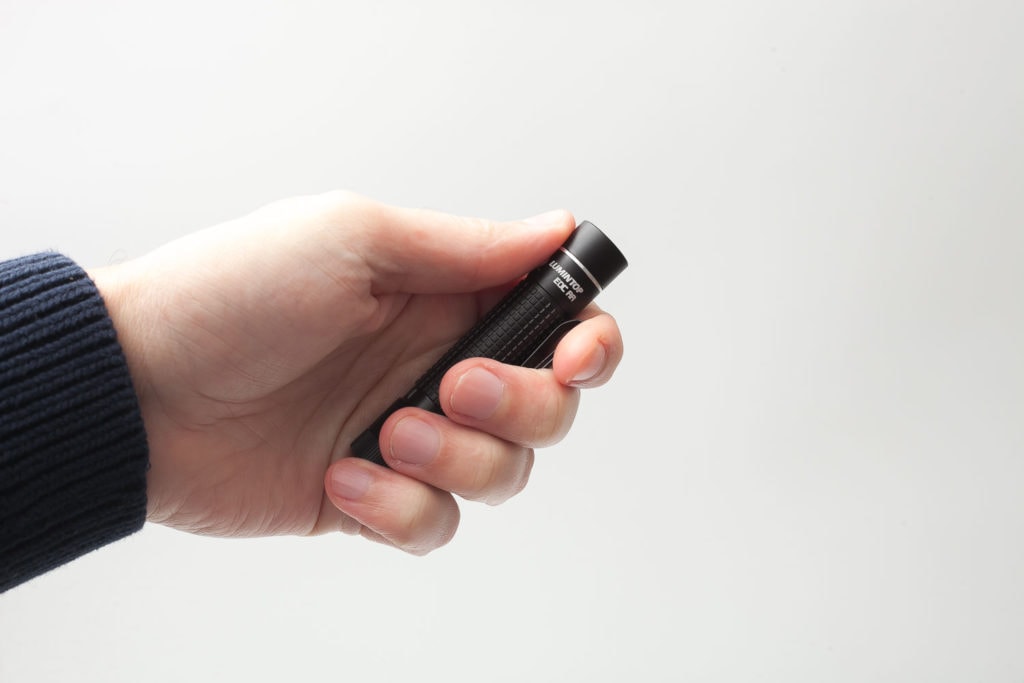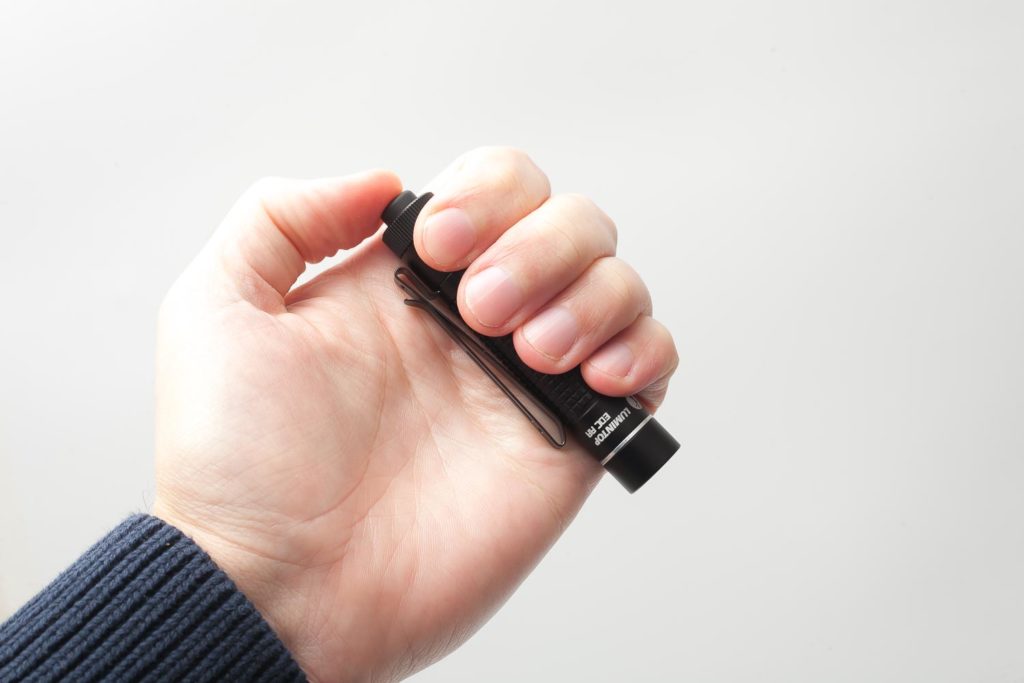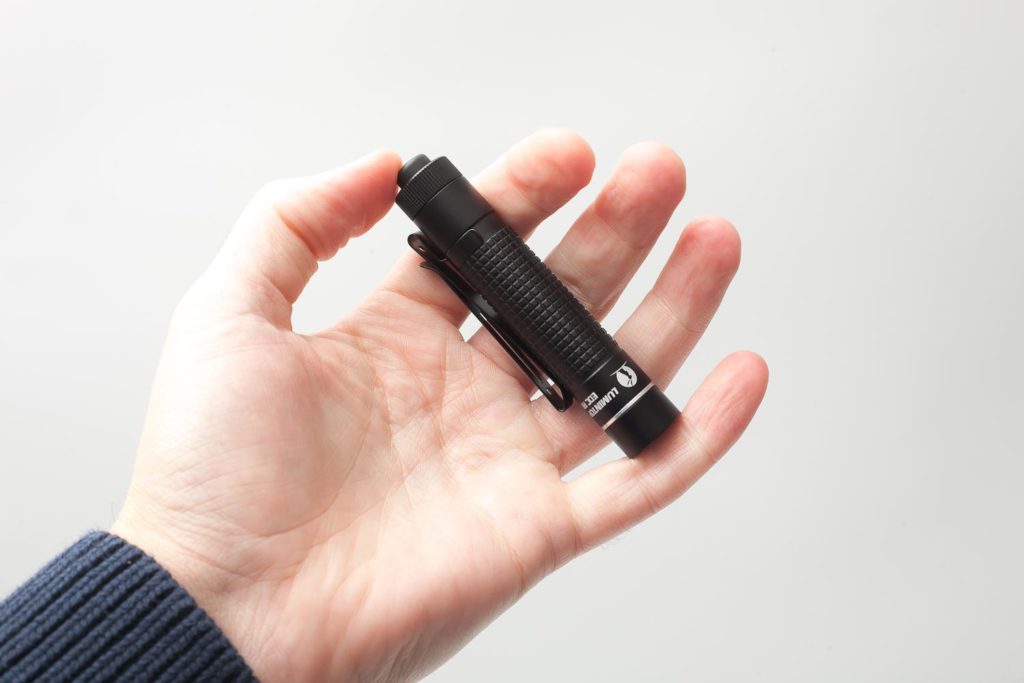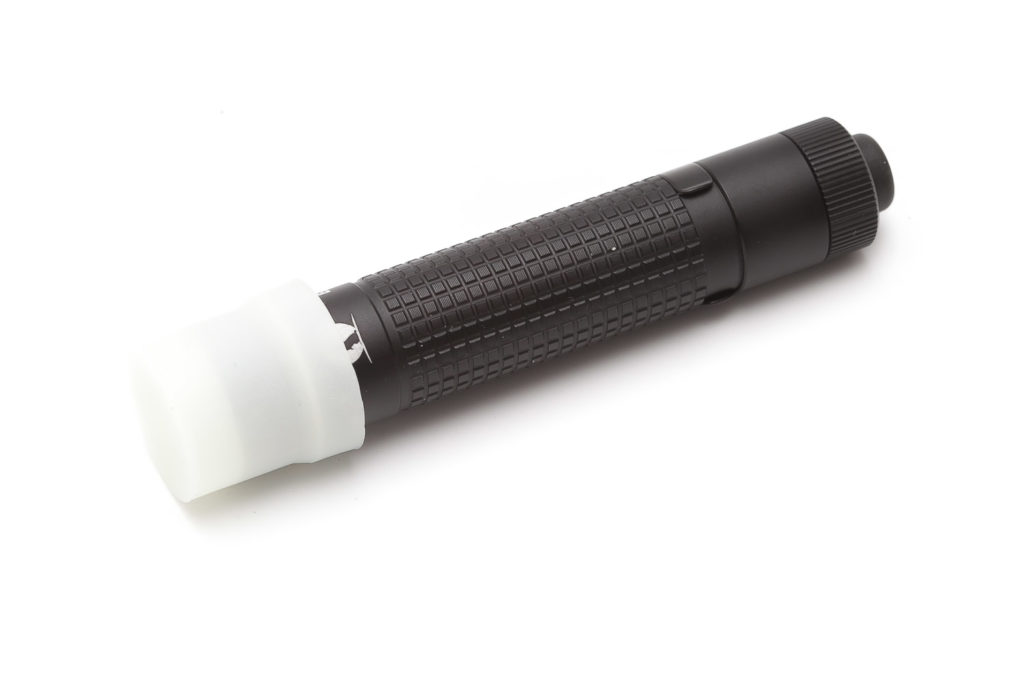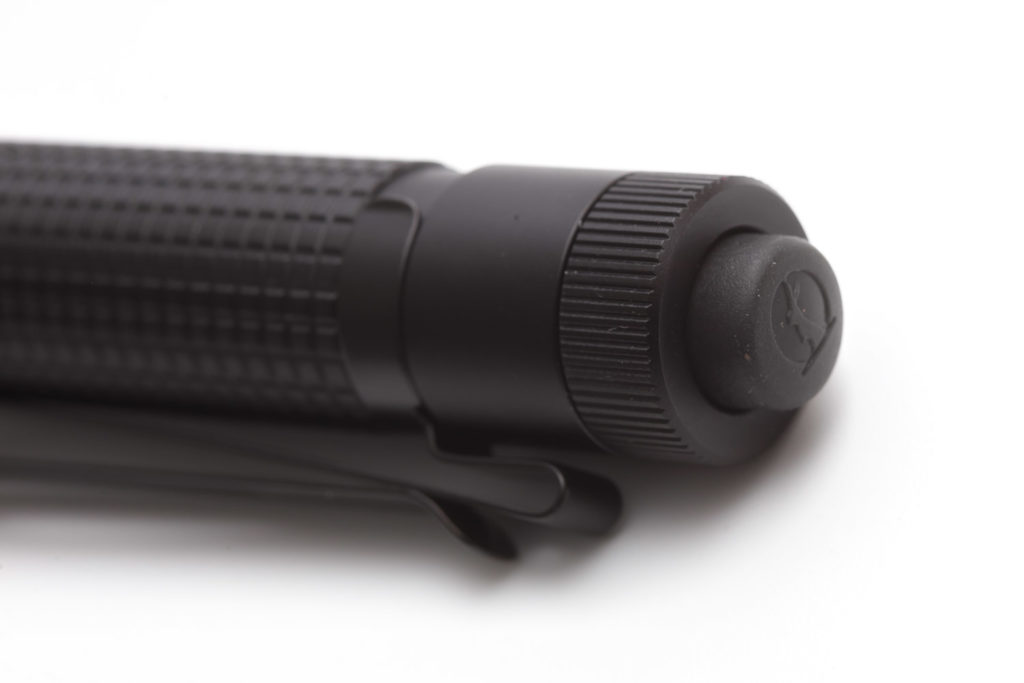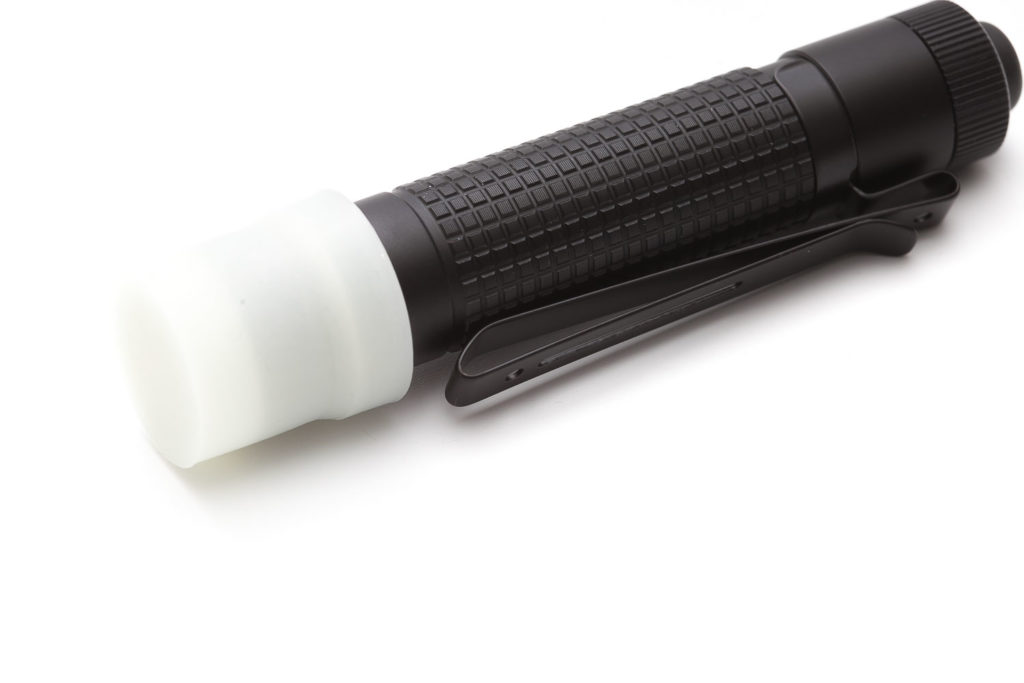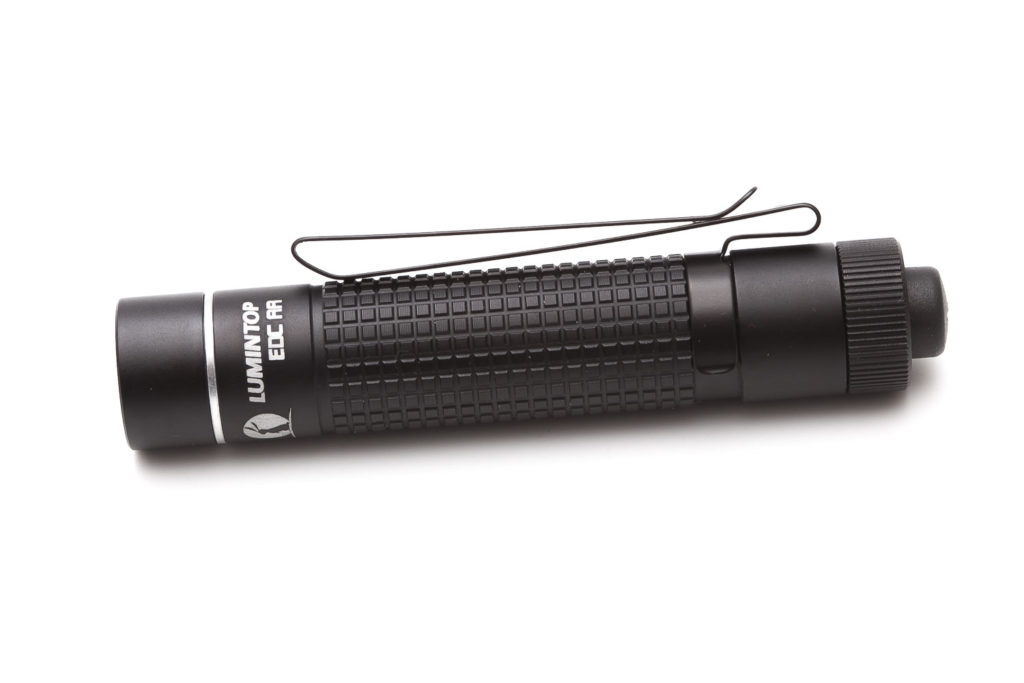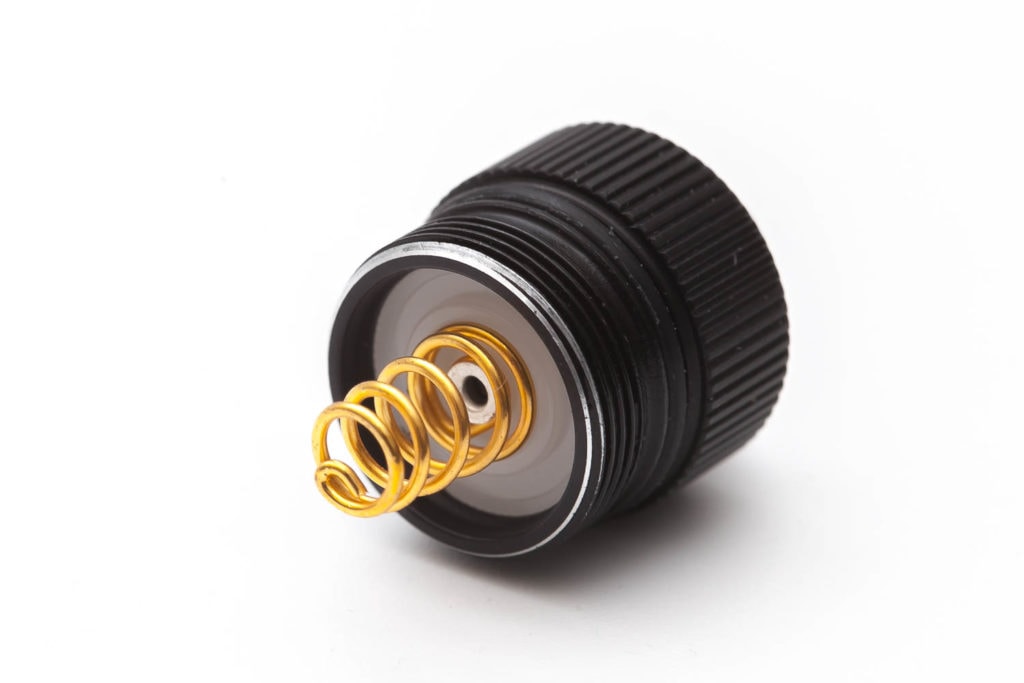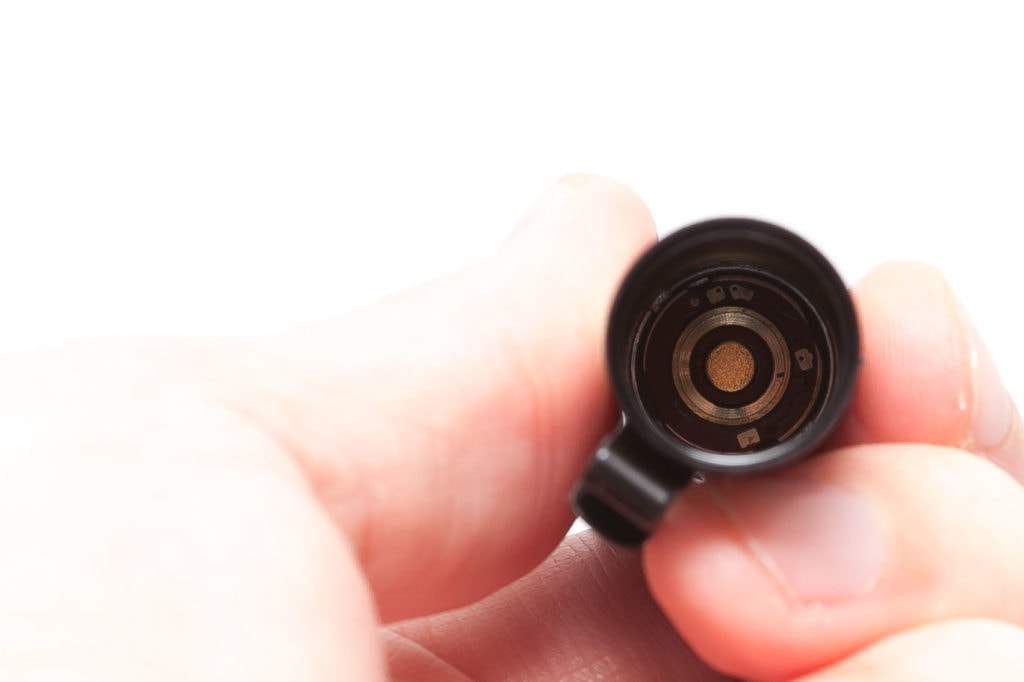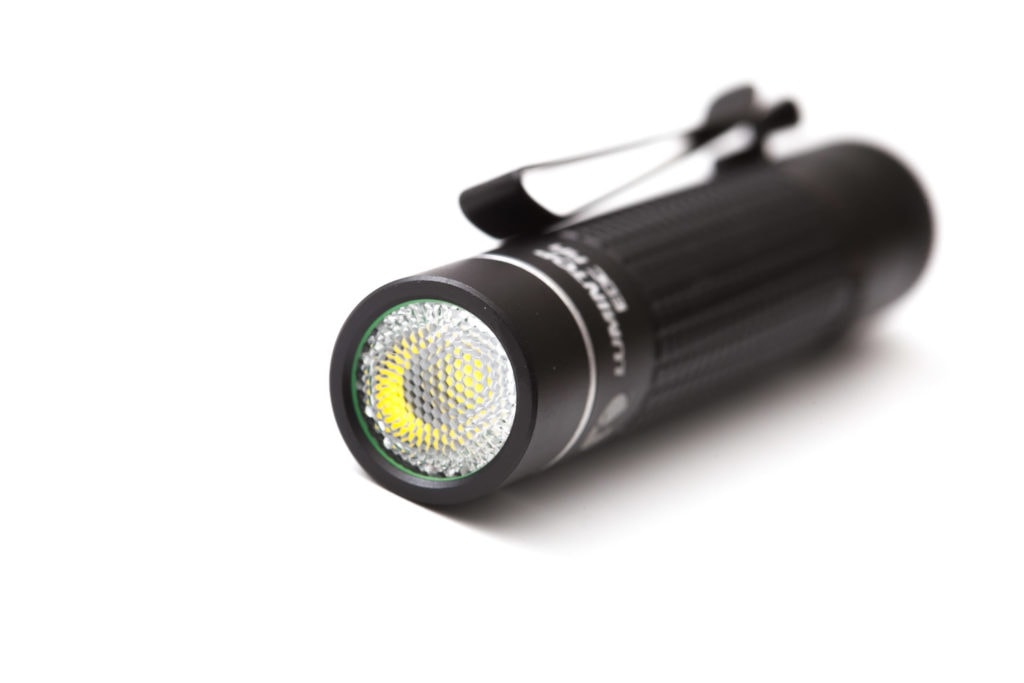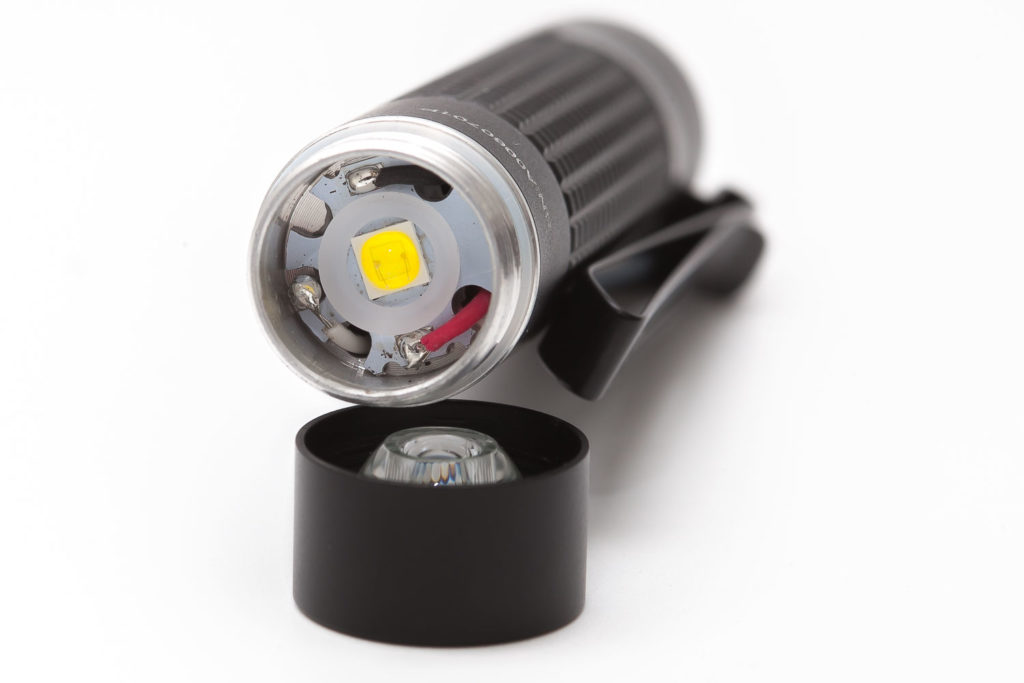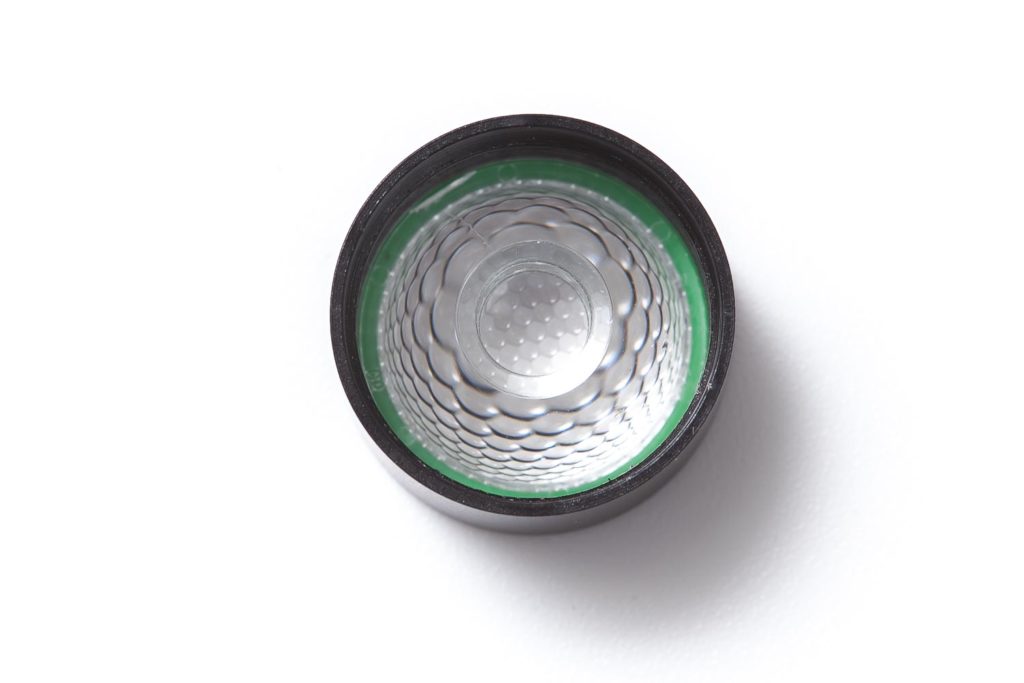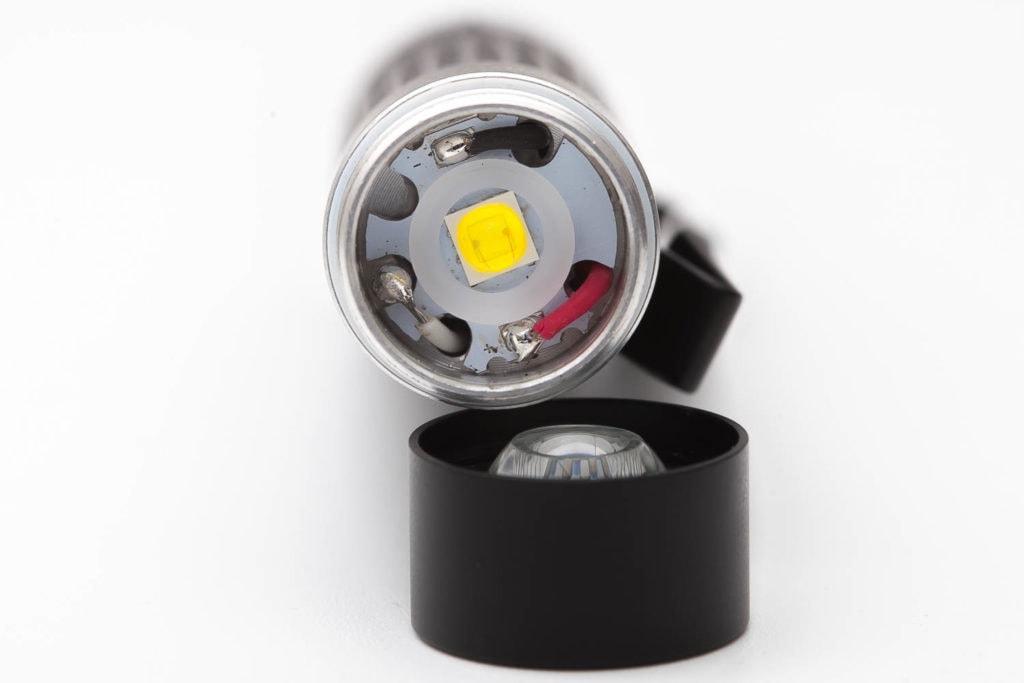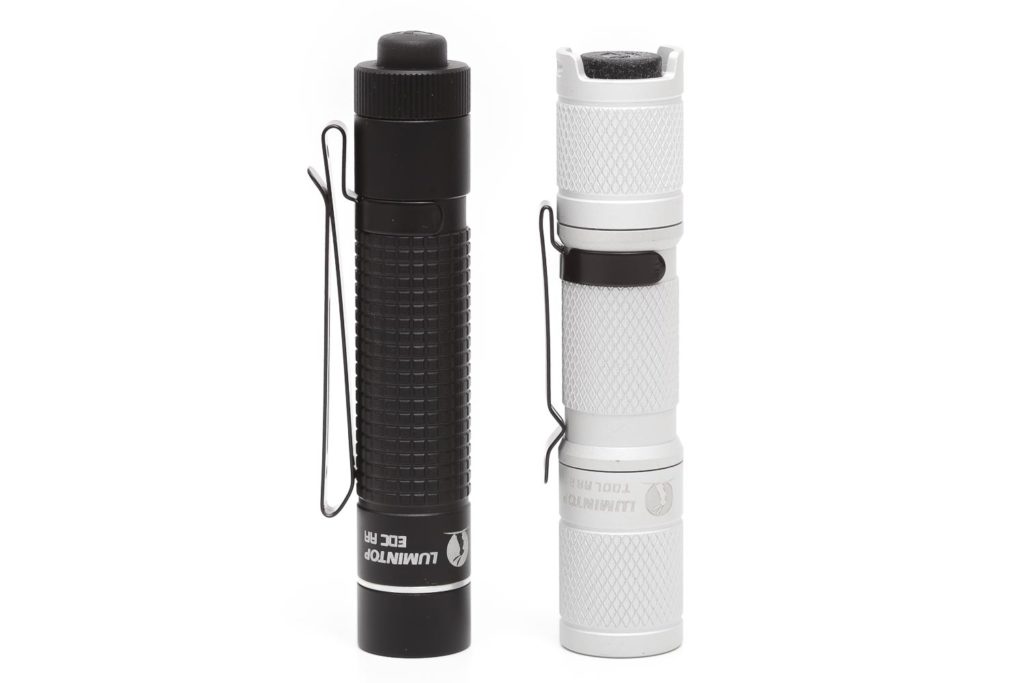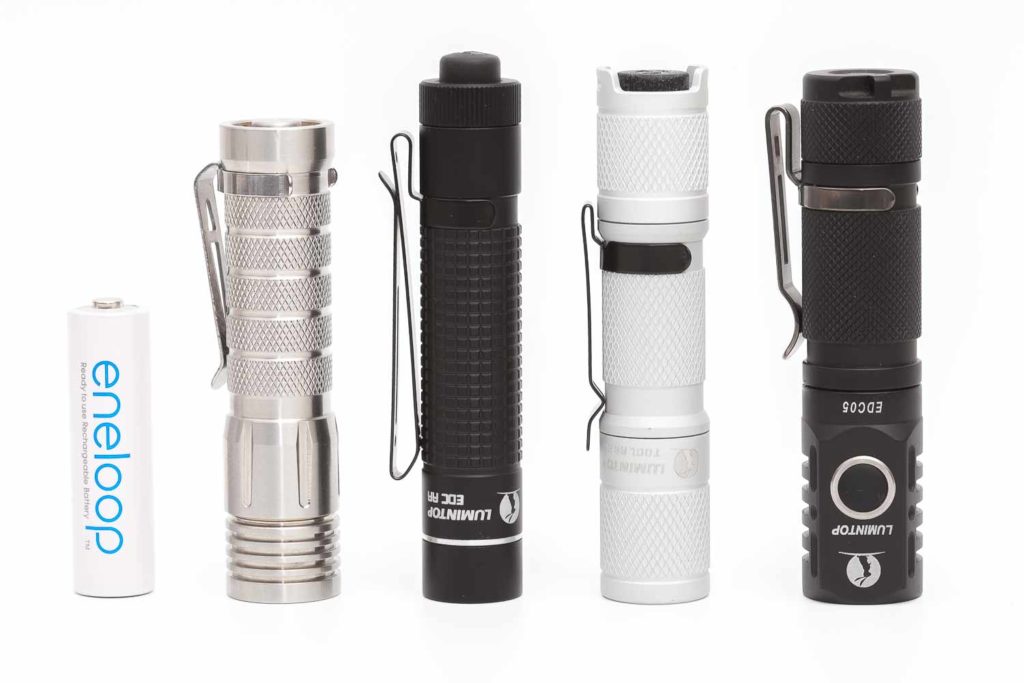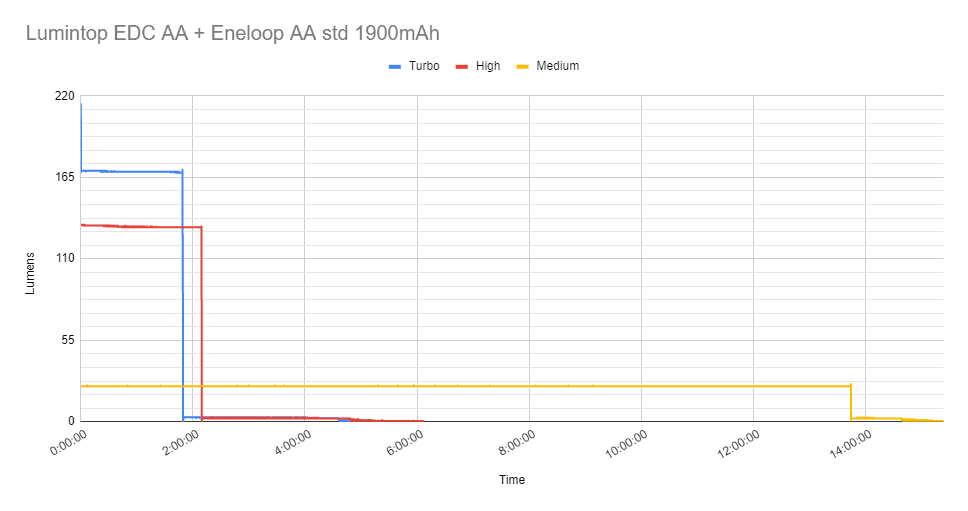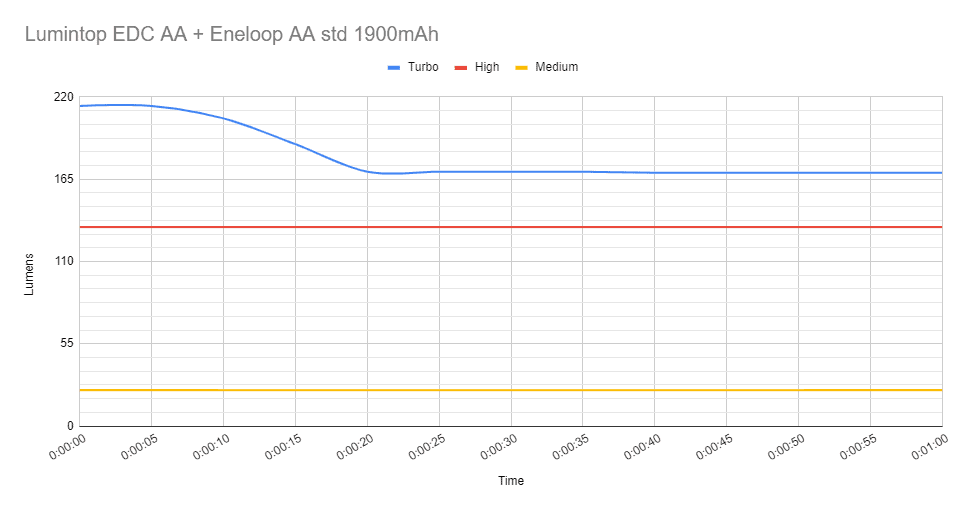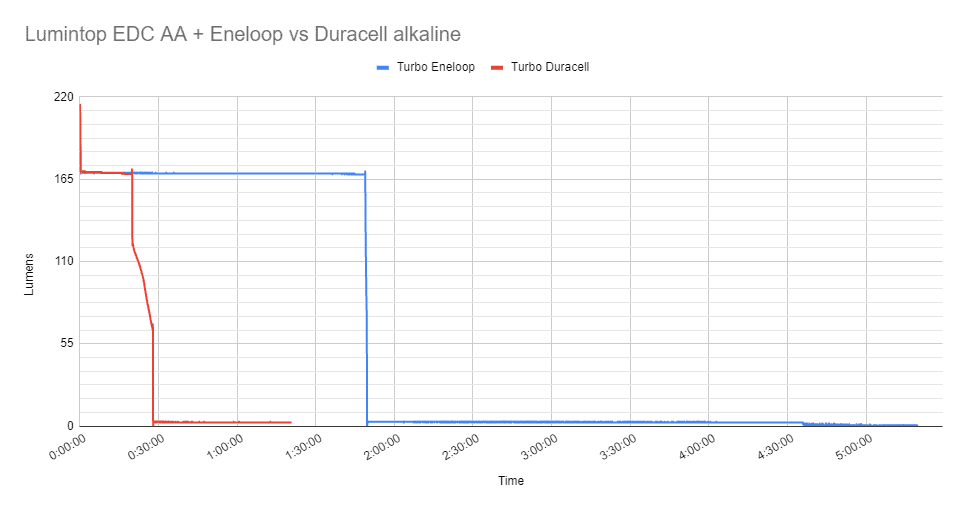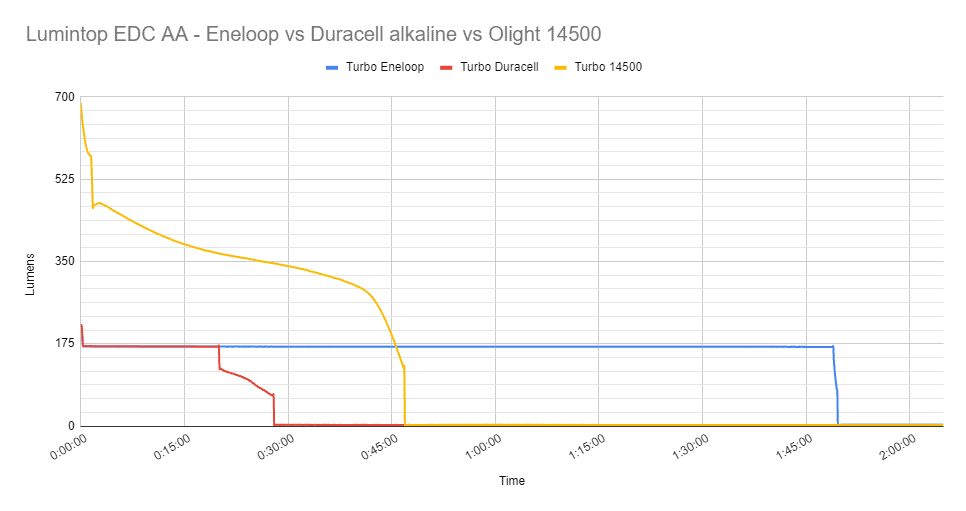1lumen selects and reviews products personally. We may earn affiliate commissions through our links, which help support our testing.
Lumintop EDC AA REVIEW
Specifications
| Brand/model | Lumintop EDC AA |
|---|---|
| LED | Osram GW PUSRA1.PM 6500K |
| Lumens | 180 / 600 lm |
| Beam intensity | 6502 cd |
| Battery config. | 1*AA/14500 |
| Material | Aluminum |
| Modes | 4 |
| Blinkies | Strobe |
| Reflector | TIR optic |
| Waterproof | IP68 |
| Review date | October 2020 |
Lumintop EDC AA INTRODUCTION:
We’ve reviewed quite a few Lumintop flashlights over the years. Since Lumintop’s collaboration with a group of entousiastic flashlight user on Budgetlightforum, they have grown a lot. Not only in business size, but also in knowledge of real use applications and users’s wishes.
Today I have the Lumintop EDC AA flashlight. A very generic name in my opinion, but that might be a smart move for marketing purposes, or maybe not. We’ll see how this will play out.
Anyway, Lumintop has produced many AA flashlights over the years, and AA flashlights used to be my favorite. That has changed over the years and I’ve become really accustomed to lithium-powered flashlights. The Lumintop is like going back in time for me, and that feels good. I don’t review many AA or AAA flashlights at all.
Package quality.
Packaging wise, you won’t be thrilled. I’m not saying it’s below average, I’m just saying this is adequate for the price you pay. We are talking about a $20 flashlight. So anything more than a plain white box is fine. And the box of the EDC AA is still fine. Inside the package you will find the next:
- The flashlight (Lumintop EDC AA)
- White diffuser
- Spare o-ring
- Two-way pocket clip
- Manual
Handling of the light
The EDC AA is a pretty short and thin flashlight. Just a bit thinner and lighter than I used to like. I’m mostly reviewing this to make this website a bit more inclusive. We are looking at a very lightweight AA flashlight with a protruding tailcap switch. The switch is a forward clicky switch, that powers on when half-pressing, and actives continuously with a full click.
When you release the switch before the click, the light will turn off.
Although the body has some knurling, there isn’t much much grip. It feels a little bit slippery, but still not too bad. I can imagine that many people wouldn’t mind this type of grip, but in some circumstances I would probably prefer just a bit more grip.
I still think this can be a great loaner.
The pocket clip can be used in two directions. This means that you could clip it onto your cap and have a ‘headlamp’ and at the same time, it can be carried deep in your pocket. It does, however, not look very strong. I played with it a bit, and it’s very flexible. Almost so flexible that at one point it would just break. It’s not as stiff as some of your average ‘normal’ pocket clip.
Because of the protruding tail switch, you can’t make it tail stand. And that’s a little bit funny because it comes with a diffuser that would make it a great ‘candle-like’ bedside light. One more thing on the diffuser though: it’s a little bit on the wide side. The widest part of the diffuser is actually wider than the bezel’s diameter.
Build Quality, Knurling, Threads, and anodization
Build-quality wise, it doesn’t exceed my expectations for a 20 dollar flashlight. The threads on the tailcap are pretty thin, and the switch assembly looks average. There is no glue on any part of the flashlight, so you have easy access to the LED, in case you want to replace it.
Anodization looks fine all across the light. Between the bezel and body is a silver ring that makes it look a little better in my opinion. It breaks the all-black of the flashlight and I appreciate that. There isn’t much else to say about this. The diffuser is a nice addition.
LED, LENS, BEZEL, AND REFLECTOR
I hadn’t watched the specifications before I opened up the head. The LED looked a little unfamiliar, and not without a reason. According to the specifications, we are talking about an Osram GW PUSRA1.PM LED with a temperature of 6500K.
The bezel is made of the same materials as the flashlight itself, namely aluminum. There is no reflector but it uses a TIR optic with a flower-shaped pattern. You won’t notice this in the beam because it has a very uniform beam without any real artifacts.
Dimensions
- Length: 91.3 mm / 3.59”
- Head + body diameter: 17 mm / 0.67”
Weight:
- Empty: 23.7 g / 0.84 oz
- With Eneloop AA battery: 50.1 g / 1.77 oz
EDC flashlights
Size compared to other EDC flashlights and other small flashlights:
Image 1: From left to right: Lumintop EDC AA, Lumintop Tool AA 2.0
Image 2: Eneloop AA battery, Enogear AA, Lumintop EDC AA, Lumintop Tool AA 2.0, Lumintop EDC05
Driver & User Interface:
Available modes:
- Low, Medium, High, Turbo
- Strobe
The switch is a forward clicky, which is a little uncommon in this size and type of flashlight. Tapping the switch will change modes, while a full click will lock the mode.
From OFF:
- Half-press: momentary light (quick half-pressing for changing modes)
- 6 half presses: strobe
- Single-click: On (last used mode)
From ON:
- Half-press: Cycle through the menu from Low to High
- Single-click: Off
Mode memory:
- Yes
Blinky modes menu:
- It has only 1 blinky mode, namely strobe. To enter strobe mode is not easy. It requires 6 quick taps, and that’s the difficulty. One side I like that strobe is difficult to reach. At the same time, for people liking to use strobe, it’s not very easy to enter.
Low battery warning:
- When the battery is really low, the light starts blinking. It continues blinking till the very last bit of energy. The problem however is the lack of a low voltage protection, at least for NiMH batteries.
Batteries & Charging
The Lumintop EDC AA has no built in charge system, so you need to use your own if you use NiMH batteries. Alkaline batteries will fit and can run for a very very long time on the lowest output, but I don’t recommend using Alkaline batteries, except for emergencies. There are just too many instances where Alkaline batteries leaked and damaged the flashlight.
Running on a 14500 is also doable, but it will only work with button top batteries. Flat tops won’t work because there is a physical reverse polarity safety feature.
There is no Low Voltage Protection for NiMH batteries, which is an issue. When left unattended, the battery just keep getting drained. At a certain voltage, the flashlight starts turning on and off. The lower the voltage, the longer the time is in between. This can take up to many seconds of no light and a few seconds of light.
After I did the runtime tests with an Eneloop battery, I measured between 0.8 V and 0.84V. That is pretty low for a NiMH battery, and some chargers will not start charging this battery. The Duracell alkaline battery I used was down to 0.68V. The Duracell battery kept running at an extremely low output for 3 nights in a row. (I switched the light off during the day, and used it as a night light for the kids). But those kinds of runtimes are not interesting to watch.
Performance
Lumen measurements:
All output numbers are relative to my homemade Integrating Sphere. It is set up with an Extech SDL400 Lux Meter for measurements including a Kenko PRO1D ND-16 filter. The base measurement is done with a Convoy S2+ that has been tested at 255 lumens.
I measured amps with a Fluke 77III at the tailcap.
The battery used is the Eneloop AA standard, 1900mAh.
| Mode | Amp at start | Manufacturer’s specs | @30 seconds | @start |
| Low | 0.02 | 2 | 2.29 | 2.29 |
| Medium | 0.11 | 22 | 24.01 | 24.01 |
| High | 0.7 | 130 | 132 | 132.65 |
| Turbo | 1.2 | 180 | 206 | 214 |
Lumen output on a Duracell Alkaline battery: measured vs manufacturers rating.
| Mode | Manufacturer’s specs | @start |
| Low | 2 | 1.14 |
| Medium | 22 | 24 |
| High | 125 | 133 |
| Turbo | 180 | 199 |
The battery used is the Olight 14500
| Mode | Manufacturer’s specs | @30 seconds | @start |
| Low | 8 | 9.5 | 9.5 |
| Medium | 80 | 73 | 73 |
| High | 400 | 368 | 389 |
| Turbo | 600 | 587 | 688 |
Runtime:
The runtime test was done with the 50cm integrating sphere, including the Kenko Pro1D ND-16 filter and Extech SDL400 data logging Lux Meter. I measure the following runtime graphs with an Eneloop 1900mAh.
From the runtime graph, we can see that Turbo has a sudden drop within the first minute and then lasts for about 1 hour and 48 minutes when it drops instantly to 3 lumens. The runtime tests are stopped when the flashlight starts to blink (turning on and off every X seconds)
Here is a close up of the runtime graph in the first 1 minute
Next up is the runtime graph with an Eneloop battery compared to a Duracell Alkaline battery. Both didn’t finish the runtime completely. You can see that the Eneloop battery has a much longer runtime in Turbo but started at roughly the same output. This shows that Eneloops can maintain a higher Voltage and Amperage for a more extended period of time.
The Duracell battery worked for three more nights at a very low output, and turning on and off as part of the low voltage protection? Unfortunately, there isn’t a real low voltage protection, so you will damage your NiMH batteries when left unattended for a few days turned on. The NiMH Eneloop battery was roughly between 0.8V and 0.84V after the runtimes, while the Duracell was at 0.68V after 3 nights of use. This means that there is a Low Voltage Warning (blinking) but not a Low Voltage Protection that stops the light from running. This could be a good thing in some circumstances since you get every slight drop of energy out of the battery but at the cost of reduced cycle life.
I also tested it with a 14500 Olight battery, with 750mAh.
Turbo drops rapidly, but its output isn’t bad at all. The runtime is roughly 47 minutes. It then drops to about 2 lumens and continues to glow for more than 2 hours. I stopped the runtime test at that point and the remaining voltage was 2.88V.
AA Flashlight performance comparison chart
Below is an interactive runtime graph of several AA flashlights I tested. These are measured with AA Eneloop batteries. Even though some of the lights work with 14500 batteries, the numbers are solely for Eneloops.
Some of the following measurements were taken directly from the runtime graph below, instead of the manual measurements, simply because I only have old data for some. So they can differ from the measurements in the review.
| Flashlight (and Link) | At turn on | 30 sec | 10 minutes |
|---|---|---|---|
| Acebeam Pokelit AA Gray | 345 | 321 | 128 |
| Acebeam Tac AA | 322 | 306 | 101 |
| Convoy T2 | 210 | 215 | 233 |
| Cyansky P10 | 335 | 212 | 133 |
| Fenix E12 v2 | 152 | 151 | 148 |
| Lumintop EDC AA | 214 | 170 | 169 |
| Lumintop Tool AA 2.0 | 345 | 248 | 212 |
| Manker E05 | 140 | 140 | 140 |
| Olight i5R EOS | 167 | 158 | 126 |
| Olight i5R EOS HiCRI | 169 | 158 | 126 |
| Reylight Pineapple v4 | 247 | 203 | 177 |
| Zebralight SC53C N | 261 | 235 | 181 |
Here’s a closeup graph of the first 10 minutes
Throw Measurement
Measurements were taken indoors with a professional Hagner E4-X Lux Meter at 2 meters and 5 meters.
Eneloop:
| Mode | Beam intensity @ 2m |
| Low | 4 cd / 4 meters |
| Med | 32 cd /11 meters |
| High | 184 cd / 27meters |
| Turbo | 272 cd / 33meters |
| Mode | Beam intensity @5 m |
| High | 200 cd / 28 meters of throw |
| Turbo | 275 cd / 33 meters of throw |
Beamshots
For the following beamshots, I used a Canon EOS 5D Mk2 and a 50mm lens. manual settings: ISO1600, 0.25sec , F4, 5000K. The wall is about 4 meters away from the flashlights.
Disclaimer: This flashlight was sent to me for review at no cost by Nealsgadgets. I have not been paid to review, nor have I been holding back on problems or defects.
OVERALL CONCLUSION
Pros
- Relatively cheap
- 4 modes with good low mode
- No PWM
- Forward clicky AA (could be a con)
- Can run for hours/days on the lowest output
- Strobe is only accessible by 6 clicks, and unlikely to accidentally happen.
Cons
- Feels not very high quality
- No accessories
- Will discharge a NiMH battery too deep when left unattended for a few days, kept turned on.
4 stars: ★★★★
The Lumintop EDC AA fits more into the category of EDC flashlights instead of keychain lights. This is because of the forward clicky and lack of keychain attachment. In terms of performance, it’s looking pretty good and for less than $20 it’s not a bad flashlight. For $20 I’m dubbing if it’s a 3 or 4-star flashlight…hmm There aren’t many AA flashlights with a forward clicky, so if you like that… you may want to consider this flashlight!
Lumintop EDC AA for sale
Get 15% off with our coupon code: 1lumen711
1lumen selects and reviews products personally. We may earn affiliate commissions through our links, which help support our testing.
